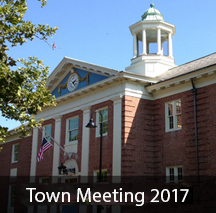 Superintendent of Schools Becky McFall and educational planners from two architectural firms will lead two workshop sessions on Tuesday, Oct. 17 at 8 a.m. and 7 p.m. in the Brooks gym, focusing on how architecture and design can support educational goals. They will share the priorities expressed by educators during a September 28 all-day visioning session, show examples of other schools, and engage the community in discussion about specific concepts and educational spaces.
Superintendent of Schools Becky McFall and educational planners from two architectural firms will lead two workshop sessions on Tuesday, Oct. 17 at 8 a.m. and 7 p.m. in the Brooks gym, focusing on how architecture and design can support educational goals. They will share the priorities expressed by educators during a September 28 all-day visioning session, show examples of other schools, and engage the community in discussion about specific concepts and educational spaces.
On Wednesday, Oct. 11 at 7 p.m. in the Hartwell Multipurpose Room, the School Building Committee (SBC) and members of the Community Center Preliminary Planning and Design Committee (PPDC) will learn more about community priorities through a series of short presentations from the Historical Commission, Public Safety, the Planning Board, the Green Energy Committee, the Conservation Commission, and the Commission on Disabilities. Added to previous presentations from Parks & Recreation and the Water Commission, these conversations will help the SBC, PPDC, and the community understand the complex series of opportunities and issues that must be balanced as work moves forward.
Dozens of residents came to two September 28 sessions to explore the future of the Ballfield Road campus. The sessions were facilitated by the architectural firm SMMA, which was hired by the SBC in partnership with EwingCole in August. In addition to the design team, members of the SBC and the PPDC were there to listen and learn from the professionals and the community.
Both the morning and evening sessions featured information-sharing and gathering as SMMA used five possible campus configurations to generate discussion and to more deeply understand Lincoln’s collective priorities for a revitalized campus, one that will cohesively accommodate a preK-8 school and possibly a community center on one site. Echoed continuously by both the community and the architects was a commitment to preserving the unique character of our campus, while at the same time defining a forward-looking vision that improves the campus experience for students and Lincolnites of all ages for years to come.
The September 28 evening workshop can be viewed online here.

